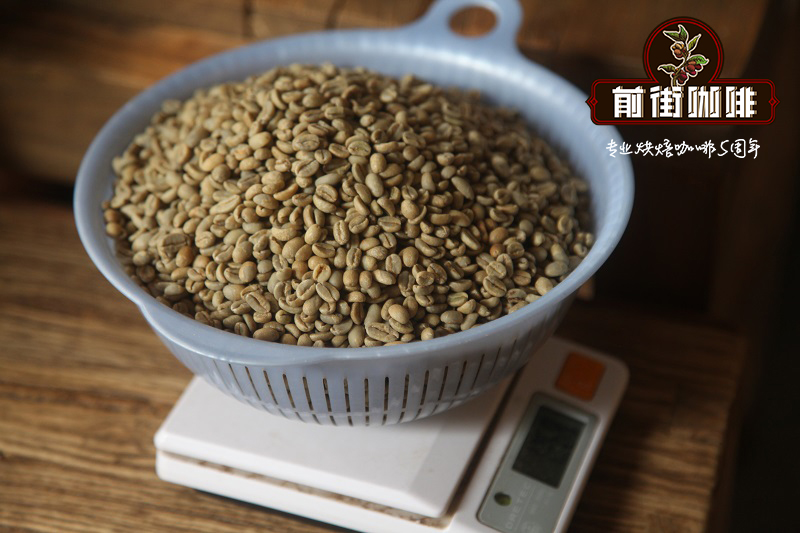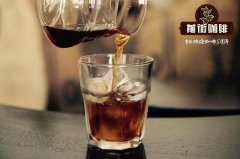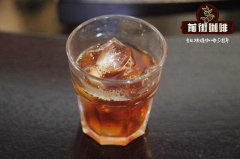How many coffee producing areas are there in Indonesia? What is the variety of Indonesian coffee beans? Is there any way to treat raw beans?

Professional coffee knowledge exchange more coffee bean information please follow the coffee workshop (Wechat official account cafe_style)
How many coffee producing areas are there in Indonesia? What is the variety of Indonesian coffee beans? Is there any way to deal with raw beans?
Indonesia exported 300000 tons last year, making it the fourth largest coffee producer in the world. About 75000 tons are Arabica coffee. 90% of these coffees are grown by sharecroppers on one hectare or less. Indonesian coffee tastes special for a variety of reasons. The most important effects are soil type, height, coffee variety, treatment method and aging method.
This combination of natural and human factors creates a unique "terroir" for each type of coffee. Indonesian coffee is very diverse in quality, and most of them use the island's origin as its market name:
Such as Sumatra (Sumatra), Sulawesi (Sulawesi), Jawa (Java) or Timur (Timor). The advantage of Indonesian coffee is that most coffee is characterized by strong, introverted flavor and lively acidity. The disadvantage is that it may also be more uncomfortable and difficult or a little mildew. Others show a rustic nature, which is liked by some coffee lovers, while others will hate it.
Sulawesi Sulawesi:
Sulawesi, formerly known as Celebes,Sulawesi, is one of the oldest islands in the archipelago, with exposed rocks for more than a million years. Soils like yellowish-red ash are found in coffee-producing areas. These soils often have several layers of clay beneath the surface, which are rich in iron.
The most famous producing area is in the high mountains of Toraja, which is located in South Sulawesi.
Kalosi, to the south of Tonaga, is the major metropolis in the region. It is also the most commonly used name of this place as the representative of Sulawesi coffee.
It is famous for its full consistency, rich flavor and low acidity.
Kalosi: the market name for coffee from southwestern Sulawesi.
Toraja: a growing area in the highlands of southeastern Sulawesi.
Sumatra, Sumatra province:
Sumatra coffee is very complex and elusive.
The best coffee in Sumatra comes from two places: the area near Lake Tawar in Aceh, north of Sumatra, and the mountains that surround Lake Toba in the south.
Due to many sharecropper producers and the use of their unique semi-washing treatment and lack of iron in the soil, coffee beans in this area have a special blue color at the stage of fresh beans.
* Mandheling: once known as the fullest coffee bean in the world. Manning is a trademark used to produce coffee from Arabica coffee in North Sumatra and coffee produced by the Manning Mandailing in the Tapanuli region of northwest Sumatra.
Lintong: Manning Lindong, the most famous coffee from Lake Toba on the island of North Sumatra.
Gayo: in Aceh province, north of Sumatra, Gayo coffee is grown on slopes around the town of Takegon and Lake Tawar. The average height in the production area is between 1110 and 1300 meters, and the coffee is planted by shade farmers under shade trees. the wet-processed coffee is cleaner, but usually not as flavor as Sumatran coffee. The coffee processed by traditional technology is similar to the coffee in Manning area of Sumatra.
The advantage is the peculiar flavor and low and lively viscosity.
Aceh, the northernmost corner of Sumatra, is a fascinating and complex place. Aceh is not an area that ordinary people will visit because of its long-standing political instability.
The Gayo are hard-working people with a firm personality, and nearly 20% of coffee processors are women.
Timor Island (Timur):
East Timor is divided into East Timor and West Timor, which originated in the early 20th century. East Timor has not used chemicals or chemicals in the past 25 years and is supposed to be the largest producer of organic coffee in the world, but because the political situation in East Timor is not very stable, it is difficult to export. Most of the beans available now are from West Timor.
Civet Coffee: coffee from Sumatra, Indonesia, is not famous for its source, but for its unique processing mode with a unique new method of processing.
A mammal called the civet, after eating ripe coffee berries, its digestive tract erodes the outer layer of the coffee cherry fruit, digests and then excretes the seeds, picking out coffee beans from the feces. These discharged coffee beans will be washed and screened. This kind of coffee is one of the rare coffee in the world because of its low yield and its rarity and special taste. It is also one of the most expensive coffee.
Now some companies simply create a product called "Kopi Luwak". Is through the artificial feeding of coffee cherry fruit to the civet.
Soil type: the soil in Aceh, Bali, Papua and Flores highlands is mainly Andosols, and the rules of word formation come from the Japanese word "an" (black) and "do" (soil).
These fresh soils come from volcanic soil and are highly fertile and contain important micronutrients. In Arabica coffee in the Java and Lintong regions, the soil is a combination of Andosols and Umbrisols. Umbrisols is a kind of weathered volcanic soil mixed with a considerable amount of organic materials like brown ash.
Harvest and handling methods:
Whether small sharecroppers or on medium-sized estates, all Arabica coffee is picked by hand in Indonesia. Because coffee cherries are all immature at the same time, farmers harvest every 10 days for five to six months. They only pick red, ripe cherries to show the best quality, aroma and taste. When mechanically harvested coffee, underripe cherries will reduce the aroma of the coffee and have a rougher taste. After harvest, these special coffees are processed in a variety of ways, and the final coffee product will have its own unique taste and aroma. Generally speaking, these features can improve the quality of coffee. However, poor or uneven treatment can lead to the loss of flavor and turbidity of coffee.
The main three processing methods are 1. Dry 2. Peel in wet (semi-washed) 3. Water washing
Most small farmers in Sulawesi, Sumatra, Flores and papua have a unique process of handling coffee, which is called giling basah in Indonesia and translated as Wet Grinding. In this technique, the farmer uses a machine to remove the cherry shell. There is still a lot of slime on the coffee beans and then stored for about a day. During this period, the mucus will be washed away. By this time the coffee is partially dry and can be sold (about 30% to 35% humidity). In this semi-wet state, the shell of the coffee is removed, giving the beans a unique dark blue. This treatment reduces the acidity and increases the body alcohol thickness of the coffee, resulting in this classic Indonesian coffee.
Altitude:
All Indonesian Arabica coffee areas are within the height range most suitable for Arabica coffee, between 1000 and 1800 meters. Usually, the higher the coffee is planted, the slower it grows and the less it produces, and the fuller beans will have more flavor.
Wamena area of Papua: 1400 to 2000 meters
Moanemani area of Papua: 1400 to 1700 meters
Central region of Flores: 1200 to 1700 m
Toraja area of Sulawesi: 1000 to 1700 m
Kintamani area of Bali: 1000 to 1500 m
In the Ijen plateau of East Java: 1300 to 1500 m
Lintong area of Sumatra: 1200 to 1500 m
Aceh region of Sumatra: 1110 to 1300 m
There are more than 20 varieties of Arabica coffee in circulation in the Indonesian commercial market. There are six main categories. The best known is Typica, an original breed introduced by the Dutch. When Indonesian coffee suffered from leaf spot disease, many Typica species disappeared in the late 1880s. However, two local Typica varieties, Bergandal and Sidikalang, can still be found in Sumatra, Sulawesi and Flores, especially in high altitude and remote areas. After the coffee beans have been screened for particle size, some producers will store the coffee for one to three years before selling it. This process will give the coffee a very mild and warm nature, with woody and cinnamon aromas. Fresh beans will slowly change color from dark yellow to brown.
Qianjie recommended cooking:
Filter cup: Hario V60
Water temperature: 88 degrees
Degree of grinding: small Fuji degree of grinding 4
Cooking methods: the ratio of water to powder is 1:15, 15g powder, the first injection of 25g water, 25 s steaming, the second injection to 120g water cut off, waiting for the powder bed water to half and then water injection, slow water injection until 225g water, extraction time about 2:00
Analysis: using three-stage brewing to clarify the flavor of the front, middle and back of the coffee. Because the V60 has many ribs and the drainage speed is fast, it can prolong the extraction time when the water is cut off.
Important Notice :
前街咖啡 FrontStreet Coffee has moved to new addredd:
FrontStreet Coffee Address: 315,Donghua East Road,GuangZhou
Tel:020 38364473
- Prev

What is the taste of Indonesian Arumanis honey treated West Java S795 variety? The flavor of Java coffee
Professional coffee knowledge exchange more coffee bean information please follow the coffee workshop (Wechat official account cafe_style) Indonesia Arumanis honey treatment West Java S795 what is the taste? What are the flavor characteristics of Java coffee? Java Arabica coffee, unlike most other Indonesian coffee, grows on small farms for initial processing. Java coffee grows on large farms or plantations.
- Next

The planting history of Java coffee beans? What's the coffee story? How to cook Java coffee beans
Professional coffee knowledge exchange more coffee bean information please follow the coffee workshop (Wechat official account cafe_style) Java coffee bean planting history? What's the coffee story? How to cook Java coffee beans? Java coffee was brought to Indonesia by the Dutch in about 1696 and has been cultivated for more than 300 years. West Java province is a first-tier administrative district of Indonesia.
Related
- Detailed explanation of Jadeite planting Land in Panamanian Jadeite Manor introduction to the grading system of Jadeite competitive bidding, Red bid, Green bid and Rose Summer
- Story of Coffee planting in Brenka region of Costa Rica Stonehenge Manor anaerobic heavy honey treatment of flavor mouth
- What's on the barrel of Blue Mountain Coffee beans?
- Can American coffee also pull flowers? How to use hot American style to pull out a good-looking pattern?
- Can you make a cold extract with coffee beans? What is the right proportion for cold-extracted coffee formula?
- Indonesian PWN Gold Mandrine Coffee Origin Features Flavor How to Chong? Mandolin coffee is American.
- A brief introduction to the flavor characteristics of Brazilian yellow bourbon coffee beans
- What is the effect of different water quality on the flavor of cold-extracted coffee? What kind of water is best for brewing coffee?
- Why do you think of Rose Summer whenever you mention Panamanian coffee?
- Introduction to the characteristics of authentic blue mountain coffee bean producing areas? What is the CIB Coffee Authority in Jamaica?

